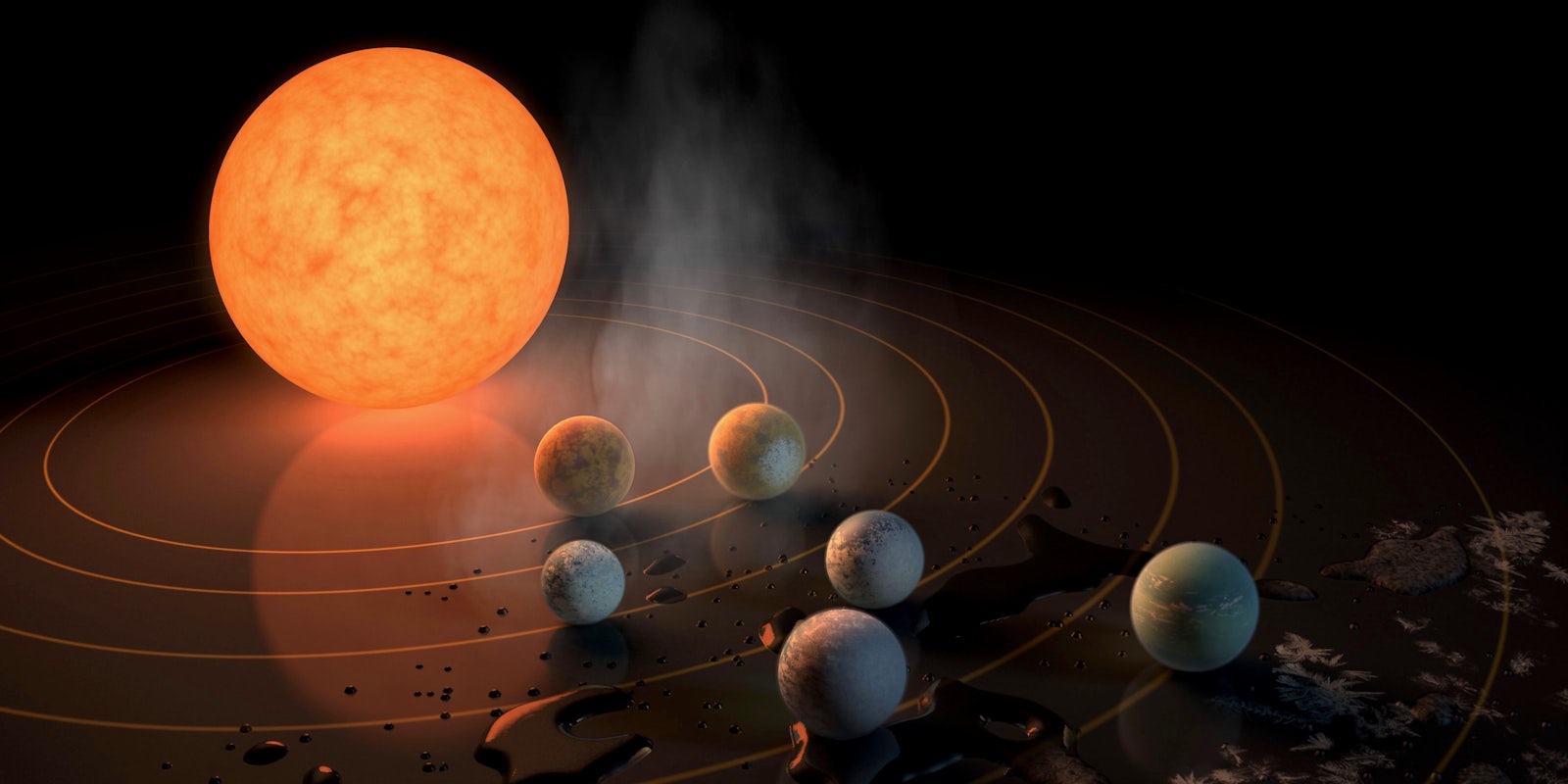NASA revealed the existence of seven Earth-sized planets orbiting a single star last week, some of which could be habitable. And although the announcement arrived with rendered art (and posters) of the exoplanets—dubbed TRAPPIST-1—we’ve now our first idea of what they look like.
Earlier this week, NASA released raw data of TRAPPIST-1 collected over 74 days and pixel files that allow scientists to view what’s being seen through a telescope.

Right now it’s just a bunch of pixels moving around, but it’s only part of the picture. The GIF from NASA is 11×11 pixels, showing what was captured from Dec. 15, 2016 to March 4, 2017 as other planets moved in front of the Kepler space telescope. It gives scientists an insight into what we know about TRAPPIST-1 while giving NASA an idea of where to follow up.
“Scientists and enthusiasts around the world are invested in learning everything they can about these Earth-size worlds,” Geert Barentsen, K2 research scientist at NASA’s Ames Research Center, said in a statement Wednesday. “Providing the K2 raw data as quickly as possible was a priority to give investigators an early look so they could best define their follow-up research plans. We’re thrilled that this will also allow the public to witness the process of discovery.”
For those following at home, here is the full 79 days of the #K2Mission‘s look at #TRAPPIST1, including the 5 day safe mode in early Feb. pic.twitter.com/QoPc16ePJx
— Ethan Kruse (@ethan_kruse) March 8, 2017
NASA expects to release the processed data collected in late May.
H/T Motherboard


